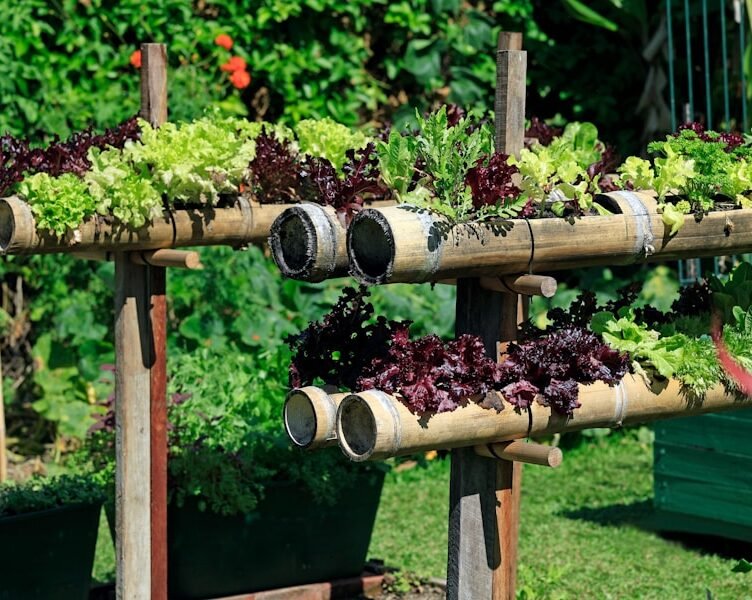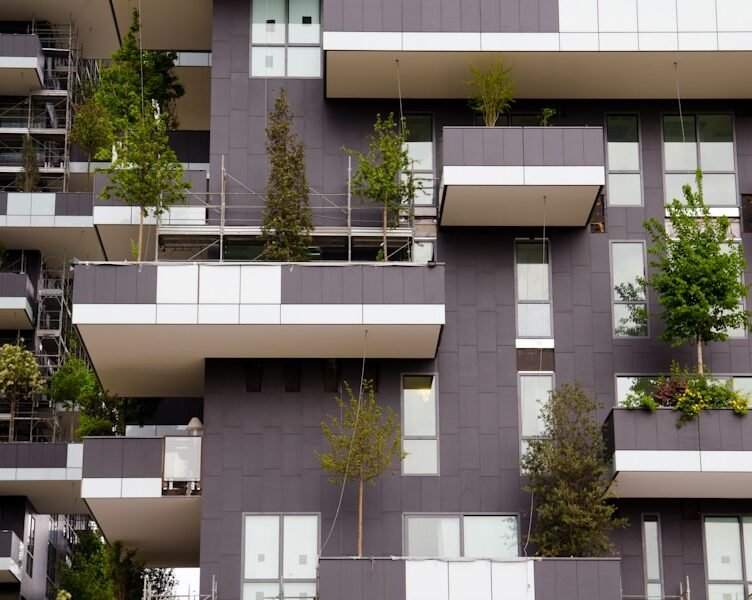One of the primary obstacles in indoor vegetable gardening is the restricted space and light availability. In urban areas, where living spaces are often compact, indoor gardeners frequently struggle to find sufficient room to cultivate their vegetables. Furthermore, the absence of natural sunlight indoors can hinder plant growth, leading to stunted development and poor yields, which can be frustrating for many indoor gardeners.
To overcome these challenges, indoor gardeners can employ vertical gardening methods to optimize their space. By utilizing hanging planters, wall-mounted shelves, and trellises, they can make the most of their limited area and grow a diverse range of vegetables in a small space. Additionally, incorporating grow lights can supplement the lack of natural sunlight, providing the necessary light for plants to grow and thrive.
Through meticulous planning and the application of space-saving techniques, indoor gardeners can overcome the limitations of space and light, ultimately achieving a successful indoor vegetable garden. Another strategy for addressing limited space and light is to carefully select vegetable varieties that are well-suited for indoor cultivation. Certain vegetables, such as microgreens, lettuce, and herbs, require minimal space and light to flourish, making them ideal choices for indoor gardening.
By selecting the appropriate varieties, indoor gardeners can maximize their space and light, ultimately enjoying a plentiful harvest of fresh vegetables.
Key Takeaways
- Limited space and light can hinder indoor vegetable gardening, requiring creative solutions such as vertical gardening and grow lights.
- Pest and disease management is crucial for indoor vegetable gardening, as the controlled environment can make plants more susceptible to infestations and infections.
- Soil quality and nutrients must be carefully monitored and supplemented in indoor vegetable gardening, as potted plants may deplete nutrients more quickly than outdoor garden beds.
- Temperature and humidity control are important factors in indoor vegetable gardening, as the indoor environment may not always provide the ideal conditions for plant growth.
- Watering and drainage issues can arise in indoor vegetable gardening, requiring careful attention to avoid overwatering or waterlogged soil.
Pest and disease management
Common Pests and Diseases in Indoor Gardens
Common pests such as aphids, spider mites, and whiteflies can quickly take over an indoor garden if not properly managed, leading to damaged plants and poor yields. Additionally, diseases such as powdery mildew and root rot can spread quickly in the confined space of an indoor garden, posing a threat to the health of the plants.
Integrated Pest Management Strategies
To combat these challenges, indoor gardeners can implement integrated pest management strategies to prevent and control pest infestations. This may include regularly inspecting plants for signs of pests, using natural predators such as ladybugs and predatory mites, and applying organic pest control methods such as neem oil or insecticidal soap.
Disease Prevention and Control
By taking a proactive approach to pest management, indoor gardeners can minimize the risk of infestations and keep their plants healthy and thriving. In addition to pest management, disease prevention is also crucial for successful indoor vegetable gardening. Proper sanitation practices, such as cleaning pots and tools between uses, can help prevent the spread of diseases in an indoor garden. Additionally, providing adequate air circulation and avoiding overwatering can help reduce the risk of fungal diseases such as powdery mildew.
Soil quality and nutrients
Soil quality and nutrients are essential factors for successful indoor vegetable gardening. Many indoor gardeners struggle with providing their plants with the necessary nutrients and maintaining healthy soil in a confined indoor environment. Without access to natural soil ecosystems and organic matter, indoor gardeners must find alternative ways to ensure their plants have access to essential nutrients for growth and development.
One approach to addressing soil quality and nutrients in indoor vegetable gardening is to use high-quality potting mixes that are specifically formulated for container gardening. These mixes are designed to provide the necessary nutrients and drainage for potted plants, ensuring that they have access to the essential elements they need to thrive. Additionally, incorporating organic matter such as compost or worm castings into the potting mix can help improve soil structure and fertility, providing a healthy growing medium for indoor vegetables.
Another way to address soil quality and nutrients in indoor vegetable gardening is to use organic fertilizers to supplement the nutrient needs of plants. Organic fertilizers such as fish emulsion, kelp meal, and compost tea provide a slow-release source of nutrients that can help support healthy plant growth without the risk of chemical buildup in the soil. By carefully monitoring the nutrient needs of their plants and providing them with the necessary organic fertilizers, indoor gardeners can ensure that their vegetables have access to the essential nutrients they need to thrive.
Temperature and humidity control
| Common Challenges of Indoor Vegetable Gardening |
|---|
| Lack of sunlight |
| Pest infestations |
| Poor air circulation |
| Overwatering or underwatering |
| Limited space for root growth |
| Difficulty in pollination |
Temperature and humidity control are critical factors for successful indoor vegetable gardening. Many vegetables have specific temperature and humidity requirements for optimal growth, making it challenging for indoor gardeners to provide the ideal conditions for their plants. Without access to natural environmental factors such as sunlight and air circulation, maintaining the right temperature and humidity levels indoors can be a significant challenge for many gardeners.
To address these challenges, indoor gardeners can use climate control devices such as heaters, fans, and humidifiers to create the ideal growing conditions for their vegetables. By carefully monitoring temperature and humidity levels in their indoor garden, they can ensure that their plants have the right environment for healthy growth and development. Additionally, using temperature-controlled grow tents or greenhouses can help create a controlled environment for growing vegetables indoors, providing the ideal conditions for optimal plant growth.
Another approach to managing temperature and humidity in indoor vegetable gardening is to carefully select vegetable varieties that are well-suited for indoor growing conditions. Some vegetables, such as leafy greens and herbs, thrive in cooler temperatures and higher humidity levels, making them ideal choices for indoor gardening. By choosing varieties that are well-adapted to indoor growing conditions, gardeners can minimize the challenges of temperature and humidity control and enjoy a successful indoor vegetable garden.
Watering and drainage issues
Watering and drainage issues are common challenges for indoor vegetable gardening. Without access to natural rainfall and drainage systems, indoor gardeners must find alternative ways to provide their plants with the right amount of water while ensuring proper drainage to prevent waterlogged soil. Overwatering or poor drainage can lead to root rot, nutrient leaching, and other issues that can negatively impact plant health and growth.
To address these challenges, indoor gardeners can use self-watering containers or drip irrigation systems to provide a consistent water supply to their plants while minimizing the risk of overwatering. These systems can help ensure that plants receive the right amount of water without the need for constant monitoring or manual watering. Additionally, using well-draining potting mixes and containers with drainage holes can help prevent waterlogged soil and promote healthy root development in an indoor garden.
Another approach to managing watering and drainage issues in indoor vegetable gardening is to carefully monitor soil moisture levels and adjust watering practices accordingly. By using a moisture meter or simply checking the soil with a finger, gardeners can ensure that their plants receive the right amount of water without overwatering or underwatering. Additionally, providing adequate air circulation and avoiding waterlogged conditions can help prevent root rot and other issues associated with poor drainage in an indoor garden.
Choosing the right vegetable varieties
Compact Varieties for Small Spaces
One approach to choosing the right vegetable varieties for indoor gardening is to select compact or dwarf varieties that are well-suited for small spaces. Vegetables such as cherry tomatoes, dwarf peppers, and mini cucumbers are ideal choices for indoor gardening due to their compact size and high yields. Additionally, selecting varieties that have shorter growing seasons or are well-adapted to cooler temperatures can help ensure success in an indoor garden.
Matching Varieties to Indoor Conditions
Another way to choose the right vegetable varieties for indoor gardening is to consider the specific requirements of each plant and match them with the available growing conditions indoors. For example, leafy greens such as lettuce and spinach thrive in cooler temperatures and higher humidity levels, making them ideal choices for indoor gardening.
Considering Light and Soil Requirements
On the other hand, herbs such as basil and parsley require plenty of sunlight and well-draining soil, making them well-suited for sunny windowsills or grow lights. By taking into account the specific needs of each vegetable variety, indoor gardeners can create a thriving and productive garden, even in limited spaces.
Managing indoor garden maintenance
Managing maintenance tasks is essential for successful indoor vegetable gardening. Without access to natural environmental factors such as rainfall, sunlight, and air circulation, indoor gardeners must take on additional responsibilities to ensure that their plants receive the care they need to thrive. From regular watering and fertilizing to pest management and pruning, maintaining an indoor vegetable garden requires careful attention to detail and consistent effort.
To manage maintenance tasks effectively, indoor gardeners can create a regular schedule for watering, fertilizing, pruning, and pest management. By establishing a routine for these tasks, they can ensure that their plants receive the care they need on a consistent basis without neglecting any essential maintenance activities. Additionally, keeping a journal or calendar to track maintenance tasks can help gardeners stay organized and on top of their responsibilities.
Another approach to managing maintenance tasks in an indoor vegetable garden is to enlist the help of automated systems or gardening tools that can streamline routine tasks. For example, using self-watering containers or drip irrigation systems can help ensure that plants receive consistent moisture without the need for constant monitoring or manual watering. Additionally, using timed grow lights or climate control devices can help create a controlled environment for plants without requiring constant adjustments from the gardener.
In conclusion, indoor vegetable gardening presents several common challenges that gardeners must overcome to enjoy a successful harvest of fresh vegetables. From limited space and light to pest management and soil quality, addressing these challenges requires careful planning, attention to detail, and consistent effort from the gardener. By utilizing space-saving techniques, implementing integrated pest management strategies, providing high-quality soil mixes and organic fertilizers, creating controlled environments for temperature and humidity control, managing watering practices effectively, choosing well-adapted vegetable varieties, and maintaining a regular schedule for maintenance tasks, indoor gardeners can overcome these challenges and enjoy a thriving indoor vegetable garden.
With careful planning and dedication, it is possible to grow a bountiful harvest of fresh vegetables indoors year-round.
FAQs
What are some common challenges of indoor vegetable gardening?
Some common challenges of indoor vegetable gardening include limited space, inadequate lighting, temperature control, pest management, and proper watering and fertilization.
How can limited space be a challenge in indoor vegetable gardening?
Limited space can be a challenge in indoor vegetable gardening as it may restrict the types and quantities of vegetables that can be grown. It may also require creative solutions for container gardening and vertical gardening to maximize space.
Why is inadequate lighting a challenge in indoor vegetable gardening?
Inadequate lighting can be a challenge in indoor vegetable gardening as it can affect the growth and development of plants. Insufficient light may lead to leggy growth, poor fruit production, and overall weaker plants.
How does temperature control pose a challenge in indoor vegetable gardening?
Temperature control can be a challenge in indoor vegetable gardening as certain vegetables have specific temperature requirements for optimal growth. Maintaining consistent temperatures and providing adequate ventilation can be difficult in indoor environments.
What are the challenges of pest management in indoor vegetable gardening?
Pest management can be a challenge in indoor vegetable gardening as pests such as aphids, spider mites, and whiteflies can still infest indoor plants. Without natural predators, controlling pests in an indoor environment can be more challenging.
Why is proper watering and fertilization a challenge in indoor vegetable gardening?
Proper watering and fertilization can be a challenge in indoor vegetable gardening as it requires careful monitoring of soil moisture and nutrient levels. Overwatering or under-fertilizing can lead to plant stress and poor growth.








1 Comment